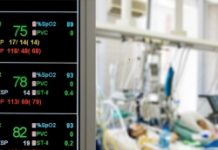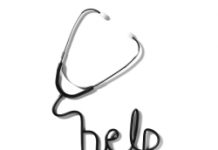 Michelle Connolly takes a look at some of the latest gadgets (and a robot) that tech heads reckon we won’t be able to practise without in the future.
Michelle Connolly takes a look at some of the latest gadgets (and a robot) that tech heads reckon we won’t be able to practise without in the future.
Robodoc ward round
Already used in many hospitals across the US, the RP (Remote Presence)-7 robotic system may look like an industrial-sized upright vacuum cleaner but it’s not – it’s a robotic doctor. The flatscreen monitor allows doctors to project their face and control robo-doc’s movement to the patient’s bedside from a workstation. It means consultants can make more than one ward round per day whilst not actually being on site. Evidence-based medicine has shown that 24-7 intensivist coverage in ICUs lowers mortality rates. Robo-doc has been used in hospitals to allow consultant doctors increased presence from home and to consult with patients and their team in the ICU. “Patients love it. I was very surprised how much they enjoy interacting with the robot,” Louis Kavoussi, vice chairman of urology at John Hopkins Hospital told JuniorDr.
www.intouch-health.com/products-RP7.html#core
 Veinviewer
Veinviewer
Trouble finding a vein and too vain to ask for help? Then try VeinViewer. VeinViewer is an aide for IV insertion and routine venepuncture – especially in paediatrics where small veins can make the process more difficult. Infra-red light from the veinviewer detects haemoglobin and the computer projects a real-time image of the underlying veins directly onto your patient’s skin, so you can locate the vein to within 0.06mm. It is also useful in locating spider and varicose veins and visualising the progress of sclerosant through vessels during treatment of telangiectasias.
www.luminetx.com/Healthcare/VeinViewer/tabid/60/Default.aspx
Mobile clinical assistant
The Motion C5 is a ‘mobile clinical assistant’ (MCA), which lets you access patient records at the bedside and order tests in real-time. The digital camera takes photos of wounds and it is hoped that the built-in barcode reader will cut drug prescription errors by up to 70 percent. Current inaccuracies in prescribing are estimated to cost up to 40,000 lives a year in the NHS. Indeed, a senior doctor has described the C5 as one of the “most exciting developments in my 25 years in medicine”.
www.intouch-health.com/products-RP7.html#core
Ultrasound Stethoscope
The background-noise-independent quality of the ultrasound stethoscope is particularly useful in locations such as at a RTA where background noise can reach 80 dB.
In fact you could even use it at the front row of a rock concert, which reaches an ear-crushing 120dB. This futuristic steth sends a beam of ultrasound into the body and when it bounces off the heart or an artery, the resultant Doppler effect is converted into sound.
www.usaarl.army.mil/



































